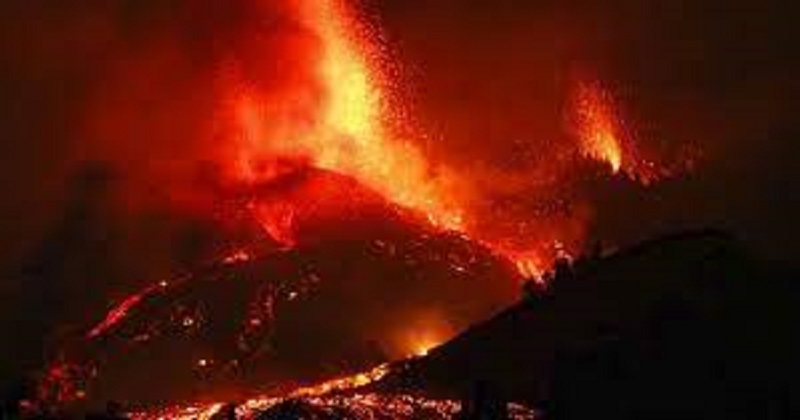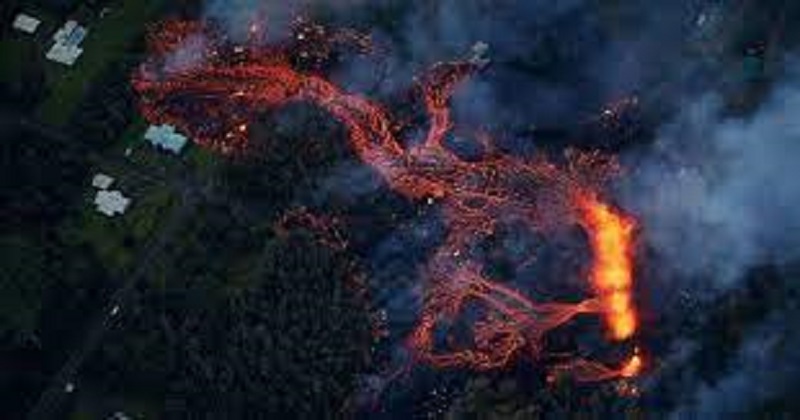
Volcanic lava from Spain’s Canary Islands has slowed significantly, raising concerns Thursday that it will spread out over the land and destroy more homes instead of flowing to sea. The speed of a giant river of lava reached four meters (13 feet) per hour on Wednesday. It moved at 700 meters per hour (230 feet per hour) on Monday after the eruption on La Palma.
The lava grew thicker as it slowed. Authorities say it rose up to 15 meters (50 feet) in places. The lava has now covered 166 hectares (410 acres) and swallowed around 350 homes. In Todoque, close to the coast, the Guardia Civil police force escorted people to their homes on Thursday morning due to the lava’s slowing pace. According to the Guardia Civil, seismic activity in the area, which surged before the eruption and has remained strong, has stabilized.

The Canary Islands Volcanology Institute said molten lava, ash, and smoke continued to pour from the volcano’s mouth, shooting up to 4,200 meters (nearly 14,000 feet). Concern arose about the possibility of open airspace over the island. Two areas above the affected area have been declared no-fly zones so emergency services can operate freely, according to ENAIRE, which manages Spain’s airspace. La Palma flights entered and departed late on Thursday. According to the Emergency Military Unit deployed on the island, there is no threat to health from readings of the air.
There have been no reports of casualties from the eruption, but property, infrastructure, and farmland are expected to be severely damaged. A possible eruption was being monitored by scientists. It allowed almost 7,000 people to be evacuated. Lava reaching the Atlantic Ocean initially caused apprehension among officials. Upon hitting the ocean, lava whose temperature exceeds 1,000 C (more than 1,800 F) will cause explosions, landslides and clouds of toxic gas.
Read more: Nation on High alert: ISI planning major terror attack in India, reports
Volcanology Institute officials point out that the eruption and its aftermath could last nearly three months. The Spanish King and Queen, as well as the Spanish Prime Minister, are expected to visit the affected area on Thursday. In contrast, life on the rest of La Palma, which is about 35 kilometers (22 miles) long and 20 kilometers (12 miles) wide, has largely been affected, with undeterred tourists landing for previously scheduled vacations. Located in the Atlantic Ocean, the Canaries are a popular destination for European tourists.

Post Your Comments